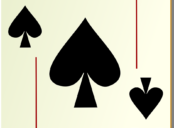Poker Rules: A Comprehensive Guide for Casino Game Enthusiasts

Introduction:
Poker is an exciting card game that has gained immense popularity among casino game enthusiasts worldwide. Whether you are a beginner or an advanced player, understanding the rules of poker is essential to play the game and increase your chances of winning. In this article, we will delve into the intricacies of poker rules, providing valuable insights for those interested in casino games.
I. Understanding Poker Rules:

Poker is a game played with a standard deck of 52 cards, which involves skill, strategy, and a bit of luck. Here are the key elements you need to know about poker rules:
1. Hand Rankings:
– Poker hands are ranked in a specific hierarchy, determining the winner at the end of each round. The highest-ranking hand is the Royal Flush, followed by Straight Flush, Four of a Kind, Full House, Flush, Straight, Three of a Kind, Two Pair, One Pair, and High Card.
– Memorizing hand rankings is crucial to understand your chances of winning and make informed decisions during gameplay.
2. Objective of the Game:
– The primary goal in poker is to win chips or money by obtaining the best hand or by convincing your opponents to fold.
– Each player aims to create the strongest hand possible using their two private cards (hole cards) and the five communal cards dealt during the game.
3. Betting Rounds:
– Poker games consist of several betting rounds, where players either place bets, match the bets made by others, or fold and exit the game.
– The two most common betting structures in poker are limit and no-limit. In limit poker, there are fixed bet sizes, while in no-limit poker, players can bet any amount of chips they have.
4. Bluffing and Psychology:
– Bluffing is an integral part of poker. Players use deception and strategic maneuvers to make their opponents believe they have a stronger hand than they actually do.
– Understanding the psychology of other players and knowing when to bluff or fold can significantly impact your success in the game.
II. Evolution of Poker Rules: A Historical Overview:
[Add H2 tag here]
Poker has a rich history that spans several centuries, evolving into the popular game it is today. Understanding the evolution of poker rules gives us insight into how the game has taken shape:
1. Origins:
– The origins of poker can be traced back to various card games played in different countries, including Persia, France, and Germany.
– The game gradually made its way to North America during the 19th century, where it gained widespread popularity.
2. Additions and Rule Modifications:
– Over time, various elements were added to the game, such as the introduction of the 52-card deck, the concept of “ante” (a forced bet), and the inclusion of wild cards.
– The rules underwent several modifications, including the development of different poker variants, such as Texas Hold’em, Omaha, and Seven-Card Stud.
3. Standardization and Popularity:
– In the early 20th century, poker saw a surge in popularity, partly due to the World Series of Poker (WSOP) and the emergence of iconic players like Doyle Brunson and Johnny Moss.
– As more players participated in professional tournaments and televised events, the rules of poker became more standardized, ensuring a fair and consistent gameplay experience.
Conclusion:
Understanding the rules of poker is crucial for anyone interested in casino games. By grasping the hand rankings, objectives, and betting rounds, you can enhance your chances of success while enjoying the thrill of the game. Moreover, the historical evolution of poker rules highlights its widespread popularity and the continuous emergence of new variants. So, get ready to shuffle the deck, bluff your opponents, and seize your moment of triumph in the captivating world of poker!
Supplementary Video on Poker Rules and Strategies
We have prepared a supplementary video that provides a visual demonstration of poker rules and strategies. The video complements the information discussed in this article, allowing you to further enhance your understanding. Click the video below to immerse yourself in the world of poker and elevate your gameplay!
Incorporating bullet points:
– Hand Rankings:
– Royal Flush
– Straight
Flush
– Four of a Kind
– Full House
– Flush
– Straight
– Three of a Kind
– Two Pair
– One Pair
– High Card
– Objective:
– Win chips or money
– Obtain the best hand or convince opponents to fold
– Betting Rounds:
– Limit and no-limit poker
– Fixed bet sizes in limit poker
– Betting any amount in no-limit poker
– Bluffing and Psychology:
– Deception and strategic maneuvers
– Understanding opponents’ psychology
– Knowing when to bluff or fold
– Historical Overview:
– Origins in Persia, France, and Germany
– Introduction of the 52-card deck
– Concept of “ante” and inclusion of wild cards
– Development of different poker variants
– Standardization and popularity through WSOP and iconic players





















